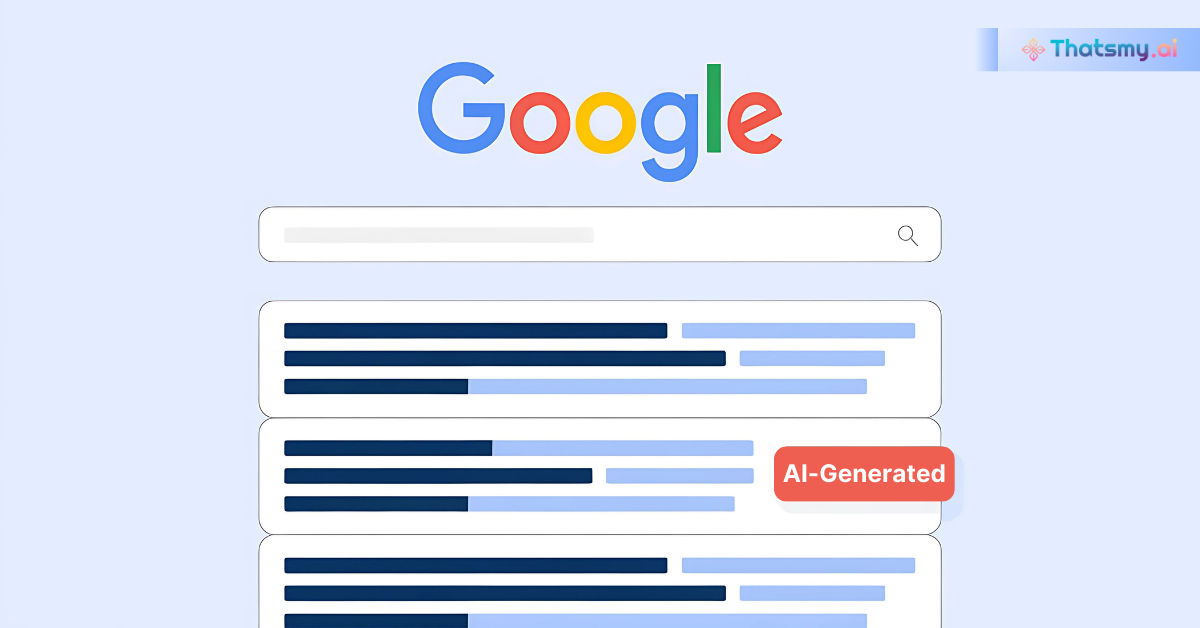Google is rolling out a system to label AI-generated or AI-modified content in its Search, Images, and Lens platforms. Using metadata tags, Google will flag content that has been created or altered by AI, providing users with valuable context. This system, developed in collaboration with the Coalition for Content Provenance and Authenticity (C2PA), will also extend to advertisements and YouTube videos. Despite challenges, such as the need for users to click deeper into metadata and the risk of misclassifying content, this move aims to increase transparency and build trust in the digital landscape.

In a move to increase transparency and assist users in making more informed decisions about online content, Google is set to introduce new labels in its search results to identify content created or modified using Artificial Intelligence (AI).
Google plans to incorporate technology from the Coalition for Content Provenance and Authenticity (C2PA), an organization it is actively involved with. The tech giant will use this technology to attach specific metadata tags to content, indicating whether it was produced by AI tools.
Over the coming months, these labels will be integrated into various Google products including Search, Images, and Lens.
When users encounter images or media containing C2PA metadata, they can use Google's "About this image" feature to determine if the content was AI-generated or edited.
This new feature aims to provide valuable context about images, enhancing user understanding of the origins of the content they interact with online.
The integration of C2PA metadata into Google's ad systems is designed to ensure that advertisements featuring AI content adhere to Google's policies.
This initiative aims to enhance how Google enforces its key advertising rules, thereby increasing the platform's reliability for both users and advertisers.
Google is also considering extending this technology to YouTube, with plans in progress to label AI-generated videos or those edited with AI tools for increased transparency.
To safeguard this labeling system, Google and its partners have developed new technical standards known as Content Credentials.
These credentials will track the history of content creation, verifying whether a photo or video was captured by a specific camera model, edited, or generated through AI. They are designed to resist tampering and ensure the source remains trustworthy.
Google's transparency efforts also include ongoing work on SynthID, a watermarking tool developed by Google DeepMind. This tool will aid in identifying AI-generated media across various formats such as text, images, audio, and video. With these initiatives, Google aims to make online content more transparent and trustworthy while simplifying user understanding as AI continues to shape media creation.
While the underlying intention is commendable, some users have expressed reservations about the effectiveness of the system. Considering the inconsistent performance of AI detection tools, there are concerns that some genuine content might be mistakenly classified as AI-generated, and vice versa.
Additionally, the labeling system may not be easily accessible to most users, as it requires clicking deep into the "About this image" feature to view the metadata.
Google's move to label AI-generated content in search results is a significant step towards increasing transparency and building user trust across various platforms. By providing clear indications of AI-generated or edited content, Google aims to empower users to make more informed decisions about the information they consume online. However, the effectiveness and user-friendliness of the system remain to be seen as it is gradually rolled out in the coming months.
Sign up to gain AI-driven insights and tools that set you apart from the crowd. Become the leader you’re meant to be.
Start My AI Journey
ThatsMyAI
20 March 2025

ThatsMyAI
7 March 2025